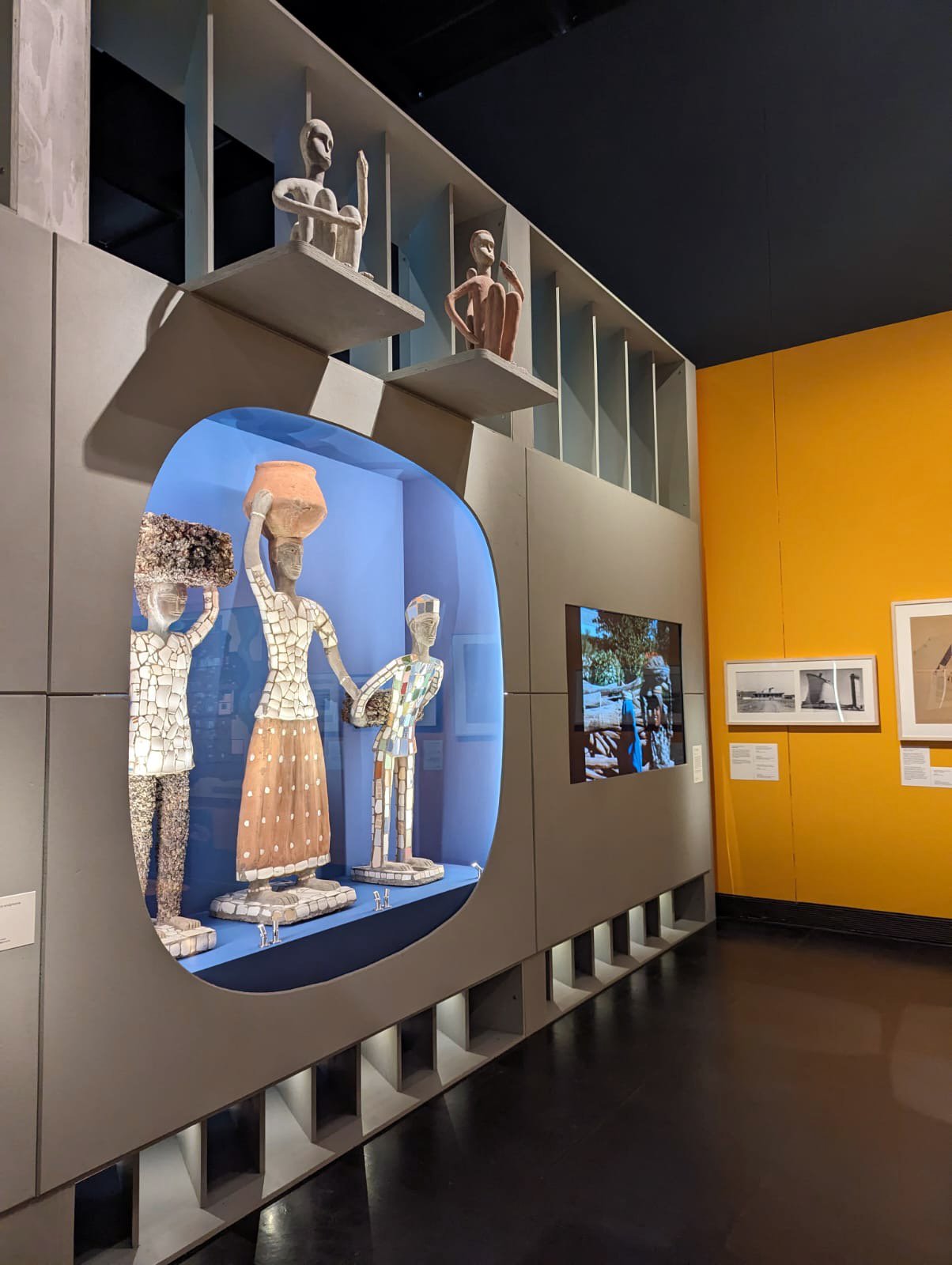Tropical Modernism
The V&A’s exhibition Tropical Modernism looks at the colonial origins of modernist architecture in West Africa and India, and follows on from the exhibition held at the 2023 Venice Architecture Biennale.
Tropical Modernism, Architecture and Power in West Africa (notice the chairs…)
Tropical Modernism was an architectural style developed in West African countries under British colonial rule. In the 1940s and ‘50s, the British government sought to offset growing calls for independence by funding modern education and public infrastructure projects.
Christopher Turner (Keeper of Art, Architecture, Photography & Design at V&A, and Curator of the exhibition): “The story of Tropical Modernism is one of colonialism and decolonization, politics and power, defiance and independence; it is not just about the past, but also about the present and the future. The exhibition looks at the colonial origins of tropical modernism in British West Africa, and the survival of the style in the post-colonial period when it symbolised the independence and progressiveness of newly independent countries like India and Ghana. We deliberately set out to complicate the history of tropical modernism by looking at the architecture against the anti-colonial struggle of the time, and by engaging with and centring South Asian and West African perspectives.”
British architects Jane Drew and Maxwell Fry were Tropical Modernism’s leading practitioners. Their style of architecture had failed to take root in Britain, but they seized the opportunity to put their ideas into practice in West Africa and India. The architecture was led by the need to produce buildings capable of dealing with hot and humid climates.
Side note - Drew and Fry were also avid collectors of contemporary art, and owned work by Indian painters Avinash Chandra, Shanti Dave, as well as a much published and exhibited still life by Francis Newton Souza.
“Buildings must respond to the climate and location - all our works attempt to address this belief. Glass buildings are popular symbols of a globalised world. A glass façade in a tropical climate exposed to hot summer sun acts as a greenhouse that requires artificial cooling. Buildings cannot and should not be standardised. Architecture appropriate for cold weather cannot be brought to a warm humid climate only for visual appeal.” - Marina Tabassum
Drew and Fry collaborated extensively with Le Corbusier on the planning and design of the Indian city of Chandigarh in the early 1950s, conceived by Indian Prime Minister Jawaharlal Nehru as ‘a new city of free India, totally fresh and wholly responsive to the aspirations of the future generations of this great country.’
‘European architects were not allowed to bring their offices with them to India – Nehru wanted Chandigarh to be a ‘living school’ for Indian architects to train on the job, says Christopher Turner. There is acknowledgment of the Indian architects who worked within the Chandigarh team full time – Corbusier visited twice a year – and Turner was pleased to be able to interview Jeet Malhotra and Shivdatt Sharma, who worked at Chandigarh from its inception as junior architects. Nehru was also keen for local architects to develop an Indian modernism as part of a new national identity, says Turner. The exhibition also looks at the work of architects such as Eulie Chowdhury (the first known Indian female architect), Balkrishna Doshi, Jeet Malhotra, Aditya Prakash and Raj Rewal, who would go on to build much of ‘modern India’. From the RIBA Journal.
Following independence, Indian Prime Minister Jawaharlal Nehru reclaimed Tropical Modernism, becoming a symbol of progress and India’s political aspiration. A new generation of local architects more sensitive to cultural context were tasked with constructing the architecture of a modern, post-colonial nation.
Included in the exhibition are the plans and a maquette for Raj Rewal’s Permanent Exhibition Complex, including The Hall of Nations at Pragati Maidan in New Delhi, created to mark the 25th anniversary of Indian Independence. The complex was controversially (understatement) demolished overnight in 2017 to make way for the corporate campus for the 2023 G20 summit.
Permanent Exhibition Complex, New Delhi
“The first generation of architects in India's post-independence era were focused on constructing a pan-Indian identity. But that remained an incomplete project. By the 1980s there surfaced a search for regional identities - responses to climate, local lifestyles, beliefs, availability of material and as well as the need to address the aspirations of local communities - a sense of pride in locality and its embedded histories. This search continues today.”
Rahul Mehrotra
As well as the architecture, the show has a focus on several modernist artists, the most prevalent being large cement figures by the Outsider artist Nek Chand. In his review of the show, the Guardian’s Rowan Moore highlights Chand’s contribution to the exhibition.
Examples of Pierre Jeanneret’s furniture and designs for the city are also present in the exhibition. (Eulie Chowdhury acted as critical intermediary between Le Corbusier, his cousin Pierre Jeanneret and the Indian architects and bureaucrats at Chandigarh). The story of how Jeanneret’s designs were removed from Chandigarh is worth an essay in itself… In September 2024 the Blue Mountain School have an exhibition of Chandigarh furniture from the collection of Rajan Bijlani.
“We need to do away with the prevalent colonial mindset and the desire to create imposing megastructures. Moving forward, we must all stand for a humanistic, inclusive architecture that is driven by environmental considerations, that treads lightly on the planet and responds to the needs of the majority."
Yasmeen Lari
V&A Museum, London
Closes 22 September 2024
Reading list:
Tropical Modernism, Architecture and Independence
Making of Chandigarh, A Vintage History
Le Corbusier & Pierre Jeanneret: Chandigarh, India, 1951-66







